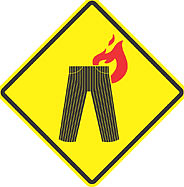
Having grown up in California and never lived anywhere but CA or Colorado, when I go someplace that has a long history, it always seems to affect me more than I expect it will. Our country is so new, relatively speaking, compared to other countries in the world, and the Western US is among the newest. Nine years ago when I got off a plane in Paris and took the train into the city, I was totally overwhelmed by the history and culture that punched me in the face. It's so old! So many people have walked her over the years! So many famous and important things have happened here! The feeling was that much stronger when I got to Rome, because walking by the Colisseum was a complete mindfuck - I was walking in the same place where other people had walked thousands of years ago. Each city I visited in Europe felt different, each one had its own story. I didn't make it to the East Coast of the US until 2002, when I went to Washington, DC to Oldest Friend's college graduation, and again I was blown away by the history, by all the things I'd studied and read about and seen on TV and in the movies but never in person. My visits to NYC and Boston have provoked similar feelings. This country does have a history, an interesting one, but it's hard to really grasp how old a place is until you experience it in person.

I've yet to visit any civil war landmarks or famous battlefields, and while I did see Bunker Hill and Breed's hill on the Freedom Trail in Boston, it didn't have the feeling that I imagine a famous battlefield would have. And at the Little Bighorn National Monument in Montana, I finally felt the sense of awe and tragedy and Something Important Happened Here that I've never felt anyplace in the western US.

At the Monument, there's a visitor center and a veteran's cemetary (this is not where the battle participants were buried, but rather a place where honored vets have been laid to rest.) We got there right as a volunteer ranger was giving a talk about the lead up to the battle, the battle itself, and a demonstration of the sorts of weapons used on both sides. Up the hill behind him, we could see the memorial site, and down below the hills and valleys that made up the logistics and had determined troop movements and the decisions made by the Native American tribes who fought. I was actually really impressed with his talk, as he made the events and reasons come to life, and it was about a balanced a perspective as one could hope to have for an event that I'm sure still engenders hard feelings from folks on both sides. Plus, I could tell the guy was totally a battle movements junkie, so that made it more entertaining.

After the talk, I checked out some of the stuff they had on display; a teepee set up with various artifacts inside, and a blanket with a uniform and mess kit and some other stuff that the American troopers would have had. Then we walked down a ways and looked at some of the headstones that were put in place to commemorate where various combatants on both sides had fallen. The really sad part was that they hadn't put the markers for the Native Americans up until 2002.


Eventually we made it up the hill to the actual monument. A large number of the US soldiers who fought and died were buried in a mass grave underneath it, although apparently Custer was buried at West Point. One of the most interesting things was to stand at the top of the hill and look at the undulation of the land below on all sides. One could easily see why the US decisionmakers had planned poorly, as they were far less familiar with the land, their weapons were not the right kind for firing in uneven, angled terrain, and they had no cover for arrows. It turns out that they even ended up shooting a bunch of their own horses to provide cover. The battle was bloody and the Native Americans won, one of the few real victories for that "side" in the years of conflict between natives and non-natives throughout that time period.

On the next rise of land is a relatively new memorial set up with the assistance of the various tribes who had fought in the battle. Instead of a piece of stone with the names of the participants, there were contributions from all the tribes, artwork, and significance in the shape of the memorial itself.

Unfortunately, we were pretty much ready to leave after that, and didn't stick around to see the inside of the visitor center. It was sunny and hot and our mosquito bites were ridiculously itchy. But I was glad we stopped, spent an hour experiencing one of the few significant historical battlefields in this part of the United States, and had the opportunity to see people of all ages and ethnic backgrounds who were just as interested as we were.


1 comment:
Great photos! I know what you mean about history - my province is 150 years old so it was so bizarre when I lived in England and worked in a pub that was over 300 years old.
Post a Comment